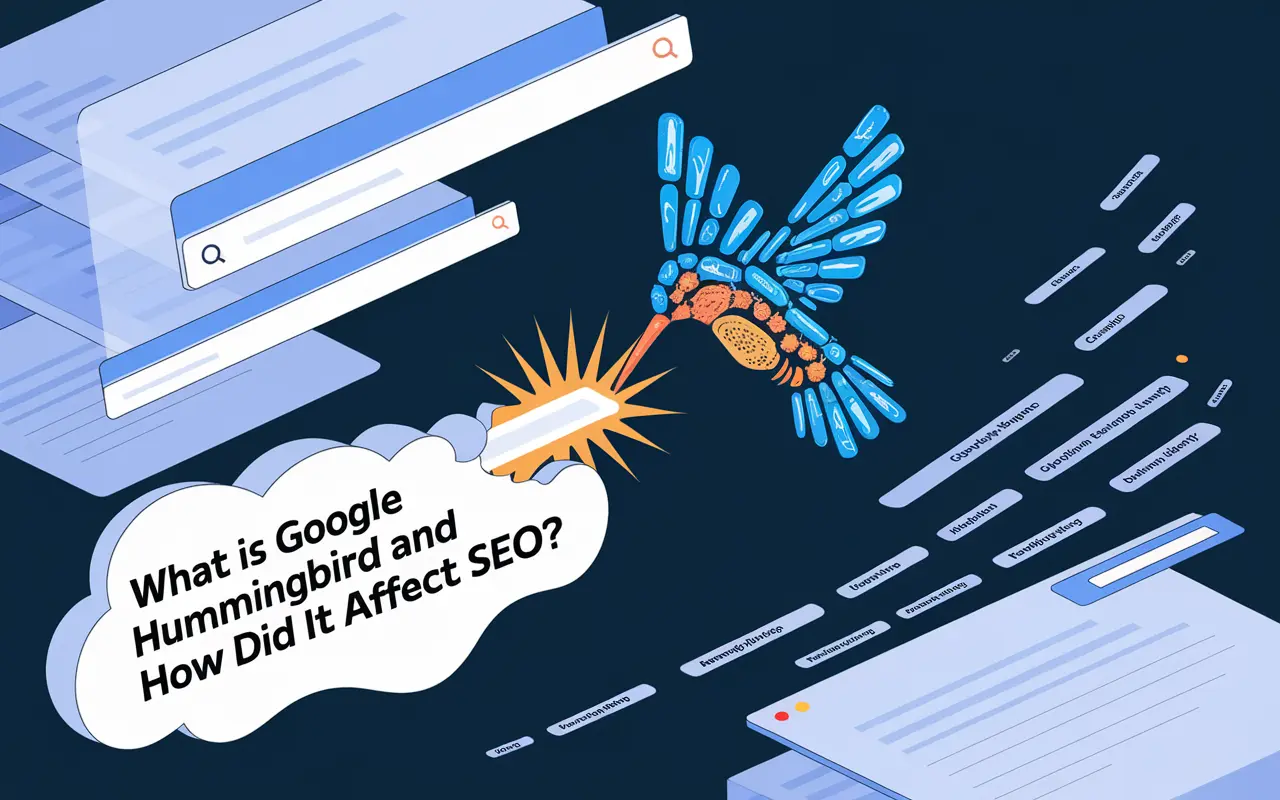Understanding Google Hummingbird: A Milestone in Search Algorithm Evolution
Google Hummingbird is a major algorithm update introduced by Google in 2013, designed to better understand search queries and deliver more relevant results. Unlike previous updates like Panda or Penguin, which targeted spam or low-quality content, Hummingbird focused on understanding the meaning behind a search query—ushering in the era of semantic search and natural language processing (NLP).
Hummingbird impacted the way Google interprets complex search phrases, putting user intent at the forefront. It marked Google’s shift from purely keyword-based indexing to a more conversational, context-sensitive search experience.
This update is crucial for businesses aiming to improve organic visibility because it emphasizes user-centric content, relevance, and authoritative answers.
Key Takeaway
Google Hummingbird redefined SEO by prioritizing user intent and semantic relevance, encouraging brands to create meaningful, high-quality content that truly answers searcher queries.
Why Google Hummingbird Matters for SEO Success
Hummingbird is a turning point in SEO evolution because it fundamentally changed how content is evaluated and ranked. Instead of matching exact keywords, Google’s algorithm now considers the context of the query and the topic authority of a page.
This means businesses that want to win at SEO must move beyond keyword stuffing and instead focus on content clarity, structure, and relevance.
To understand where Hummingbird fits in the broader SEO strategy, visit our SEO Services Page.
Best Practices to Align with Google Hummingbird
- Focus on User Intent: Create content that answers the deeper questions behind a user’s query. Understand the ‘why’ or ‘how’ behind keywords.
- Implement Semantic SEO: Use related terms, synonyms, and topic clusters to support broader topical relevance.
- Use Natural Language: Write like your users speak. Conversational content aligns well with how people search.
- Structure Your Content Clearly: Use headings, bullet points, and schema markup to guide Google in understanding your page structure.
- Leverage Long-Tail Keywords: Optimize for more specific, intent-rich keywords that reflect natural questions.
How Google Hummingbird Works: Under the Hood of Intent Recognition
Rather than indexing web pages based only on keywords, Hummingbird seeks to understand the meaning or semantics of an entire query.
It incorporates two major mechanisms:
- Natural Language Processing (NLP): Helps Google understand queries as whole questions, not disconnected words.
- Entity-Based Search: Google identifies and connects entities (people, places, things) and their relationships for better results.
This shift benefits content that’s optimized for readability, topic coverage, and intent satisfaction—not just keyword density.
| Pre-Hummingbird | Post-Hummingbird |
|---|---|
| Keyword-focused SEO | Intent-focused SEO |
| Exact-match results | Contextual and semantic results |
| Static page targeting | Dynamic, question-based content |
Case Study: How Aligning Content with Hummingbird Boosted Traffic
Problem: High Bounce Rate Despite Keyword Optimization
A SaaS company experienced stagnating organic traffic even though they were targeting high-volume keywords. Time on site was low, and bounce rate high—signals of poor content relevance.
Solution: Content Redesigned Around Search Intent
They restructured their blog posts to focus on answering user-centric questions and grouped content into topical clusters using natural language. Each article addressed specific problems their users were asking online.
Results: 42% Increase in Organic Traffic in 60 Days
Google rewarded the updated content with better rankings. Bounce rates dropped by 30% and average session duration increased by 44%, indicating stronger engagement.
Common Mistakes to Avoid with Google Hummingbird
- Keyword Stuffing: Overemphasizing keywords without matching intent can harm your rankings.
- Ignoring Long-Tail Keywords: These are essential for capturing nuanced, intent-driven queries.
- Writing Without Purpose: Publishing content without addressing user questions leads to poor dwell time and engagement.
- Thin Content: Pages with little valuable information are less likely to benefit from semantic analysis.
Related Terms
- Semantic SEO: Focuses on optimizing content to align with contextual meanings rather than just keywords.
- SEO Algorithms: The core logic governing how search engines evaluate and rank content.
- RankBrain: A machine learning component of Google’s algorithm that assists Hummingbird in interpreting search intent.
FAQs About Google Hummingbird and Its SEO Effect
Google Hummingbird is an algorithm update focused on understanding the intent behind search queries using natural language processing and semantic search.
It requires SEO professionals to focus on content quality, semantic relevance, and user-centric answers instead of just targeting exact-match keywords.
Yes, although newer updates like RankBrain and BERT have evolved the algorithm, Hummingbird remains the foundation that powers modern semantic search.
Create well-structured, comprehensive content that answers questions users are likely to search for. Use related topics and natural language throughout.
Conclusion: Embrace Intent-Driven SEO with Hummingbird in Mind
Google Hummingbird marked a major leap in search engine evolution, focusing on context, user intent, and semantic relevance. For businesses, this means creating content that serves your audience’s true needs rather than keyword-centric strategies. Incorporating Hummingbird principles leads to increased search visibility, higher engagement, and ultimately, stronger conversions.
If you want to take your SEO to the next level using intent-based strategies, visit our SEO services page to learn more.






